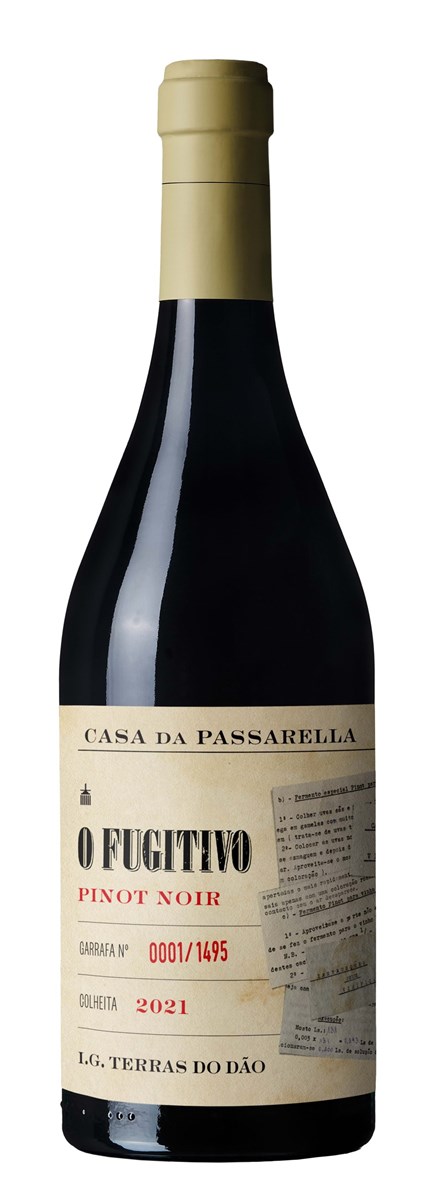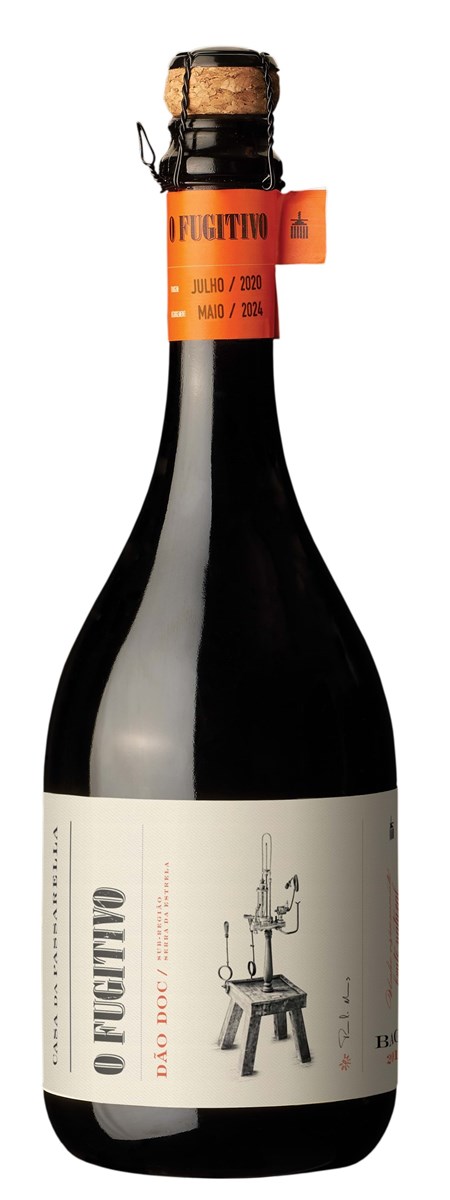Casa da Passarella is one of the oldest in Dão and one of the richest in diversity of grape varieties and old vinesas it is practically no longer found in the region. Perhaps it was by luck that this enormous genetic heritage was preserved throughout the 20th century, but it was certainly no coincidence that the house rose from the ashes in the first decade of the millennium and now makes great wines, modern and authentic.
Even when the winemaking team admits to having “many doubts and few certainties,” as sometimes happens with winemaker Paulo Nunes, one thing remains crystal clear: “Only respecting the terroir, the characteristics of old vines and ancestral know-how” can produce the wines they want. What you drink here, to paraphrase a famous advertisement, you can’t drink like it anywhere else.
Casa da Passarella is one of the oldest in Dão and one of the richest in diversity of grape varieties and old vineyards, the likes of which are practically no longer found in the region.
Photo: DR
We start with the one that is, possibly, the most dissonant note of the current offer at Casa da Passarella: a Pinot Noir 2021, from the Fugitivo line. This range pays homage to Burgundian (and Jewish) winemaker Helliswho, in the early 1930s, fled Europe and took refuge in this little corner of Portugal, where he worked for more than a decade. Little is known about his history, but the work he carried out is well documented, including the planting of a Pinot Noir vineyard that greatly helped the farm’s wines in the following years. Although the variety is not part of the demarcated region, the connection is deep and ancient – and it is no coincidence that Dão is often compared to Burgundy. What we have here is an excellent example of what the caste can give: an open colored wine, elegant in the mouth, with acidity and pH almost whiteand a very attractive complexity. “Pinot has a very fine line”, says Paulo Nunes, “if we get it right we will have a great musical work, but If we fail, we will be left with the most popular song you can imagine.” You got it right.

The Fugitive Pinot Noir 2021. A limited edition of 1495 numbered bottles. Price 30 euros
Photo: DR
Let’s move on to Sparkling Berry 2018 Naturealso from the Fugitivo range. The sparkling wine has a translucent colorlike onion skin, and “It’s not white or pinkit’s Baga, which is what matters.” Paulo Nunes also doesn’t really agree with the importance given to color, which is why he has become a kind of civil rights lawyer for wine: “Color interferes with what you feel on the nose or mouth?”, he asks, before continuing (without waiting for an answer), “I believe that, In 40 years, no one will give any importance to color. We’re past that stage.”

O Fugitivo Espumante Baga 2018. 2500 + 1000 bottles (stored for another 10 years). Price: 40 euros.
Photo: DR
As for the sparkling wine, the result is largely due to the studies, techniques and trials of the first sparkling winescarried out in the 1930s and 1940s by Dr. Mario Pato. It uses the classic method, with the second fermentation in bottleand spends four years on fine lees (sur lies). The Berry base, with very strong acidity, allows for longer fermentation. It’s a wine of great complexity, dry, with good vegetable and red fruit notes. Strongly recommended.
From here, we move on to Villa Oliveirawhich this year presents three new features: a Touriga Nacional from 2018, Vinha das Pedras Altas from 2017 and Vinha Centenária Pai D’Aviz from 2018.
A brand was created in 1893 and precedes the demarcated region until the elevation of the Dão, which only happened in 1908. It is therefore not surprising that it was recovered for these wines that only come out in special yearsalthough “fortunately, this happens more and more frequently, as a result of the stability allowed by old vines.”
In common, the three reds share an extended aging period of 36 months in barrels of 2500 and 3000 liters or, in the case of Touriga Nacional, in barrels smaller than 500 liters. “The three aging winters are essential to give stability to the wine”, explains the winemaker. “That way, I never need to intervene with filtration or gluing.” It’s a much more natural wine.
A Touriga Nacional is special, because it is a kind of best of of the tourigas in the old vineyards of the Quinta. AND only three people are allowed to go into the middle of the ancient vineyard search, identify and pick the grape variety among all the others. AND fruity and deepand one of the wines that justify the title given to Touriga, Queen of Portuguese Grapes.

Villa Oliveira Touriga Nacional 2018. 2500 bottles. Price: 45 euros
Photo: DR
In the case of Pai D’Aviz Centennial Vineyardwhat immediately draws attention is the alcohol content of 12.5 degrees – in a perfectly evolved red. Dão has this ability, as we perhaps don’t find in another region of the country, to offer perfectly ripe wines and grapes, but without alcohol levels of 15 degrees, and this is particularly evident in this red, with a enormous lightness and strong acidity. The profile is reminiscent, in some way, of the classic Dão wines from the 1960s and 1970sfor those who know them – and those who don’t know them will still find many examples for sale in cellars, in excellent condition. If it also smells like pine needles, don’t be surprised, because the vineyard is completely surrounded by woods and this seeped into the wine. We can say that it is ready to drink, but it still has a lot to gain from a few more years in the bottle.

Villa Oliveira Vinha Centenária Pai D’Aviz 2018. 3700 bottles. Price: 50 euros
Photo: DR
From Vinha Pai D’Aviz we take a leap to Pedras Altas Vineyard. A small leap, because they are not 100 meters away from each other. But the profile changes completely. As Pedras Altas faces south, more exposed to the sun, wine has another gravity. Loses in lightness and acidity, gains in body and fruit. The vineyard has more than 24 grape varieties (Baga, Alfrocheiro, Touriga Nacional, Alvarelhão, Tinta Pinheira, Jaen, Tinta Carvalha, among others), but they are not planted homogeneously. Thus, in certain areas we have a predominance of certain grapes to the detriment of others, and what they did in this wine was focus on a spot high in the vineyard, with more Alfrocheiro, Baga and Touriga Nacional. In other words, despite having the vineyard in the name, it is, in fact, a parcel wineor even a micro installment. If we had to choose one word to describe it, it would be authentic. And elegant. Elegance and authenticity. Two words, after all. It’s the wine’s fault.

Villa Oliveira Villa Oliveira Vinha das Pedras Altas 2017. 3000 bottles. Price 50 euros
Photo: DR
Source: www.must.jornaldenegocios.pt


